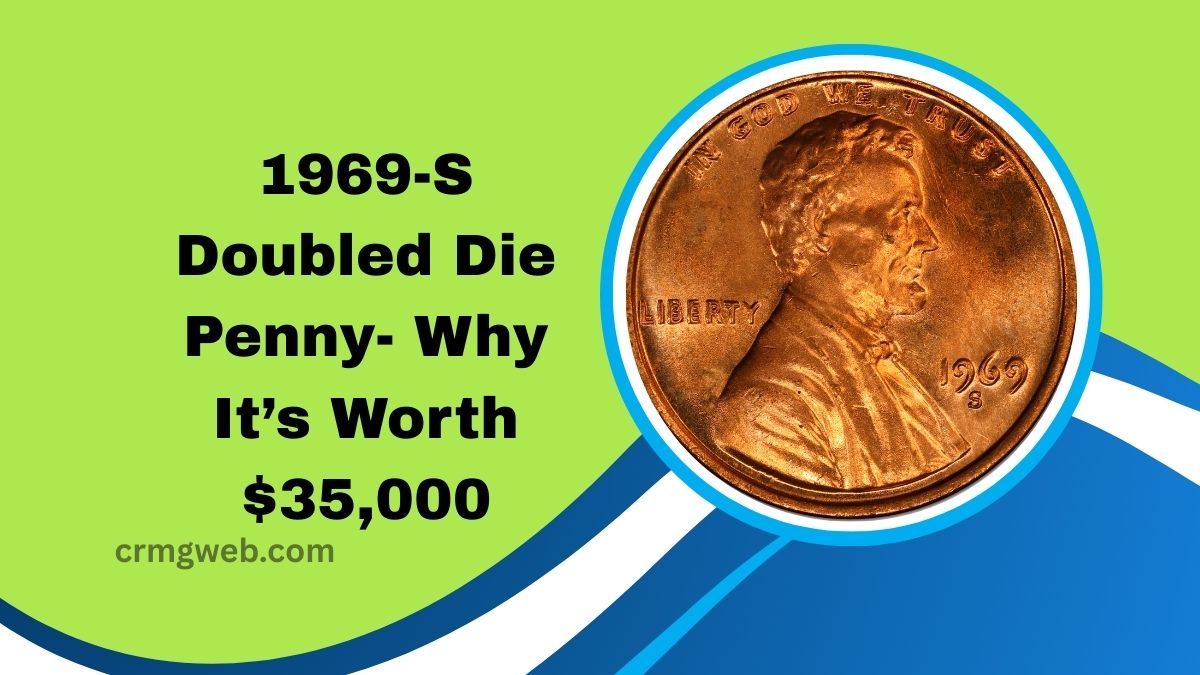The world of coin collecting is filled with hidden treasures, and among them, the 1969-S Doubled Die Penny stands out as a remarkable find.
This particular penny, due to its rare minting error, has been valued at $35,000 or more. Beyond this, there are several other coins that have captured the attention of collectors and enthusiasts alike.
Let’s delve into the details of these fascinating coins.
The 1969-S Doubled Die Penny: A $35,000 Rarity
The 1969-S Lincoln Memorial Cent is renowned for its doubled die obverse—a minting anomaly where the coin’s design elements are duplicated.
This error is most noticeable in the inscriptions “LIBERTY” and “IN GOD WE TRUST,” as well as the date “1969.” Such distinct doubling resulted from a misalignment during the minting process, making these coins exceptionally rare.
Key Details:
- Mint Mark: ‘S’ indicating the San Francisco Mint
- Error Type: Doubled Die Obverse
- Estimated Value:
- Circulated condition: $10,000 and up
- Uncirculated condition: $35,000 to $50,000 or more
- Record Sale: A Mint State 64 specimen sold for $126,500 in January 2008
Given the existence of counterfeit versions, it’s crucial to have any suspected 1969-S Doubled Die Penny authenticated by a reputable coin grading service.
Seven More Coins Every Collector Should Know About
Beyond the 1969-S penny, several other coins have garnered significant attention due to their rarity and value:
1. 1913 Liberty Head Nickel
Only five specimens of the 1913 Liberty Head Nickel are known to exist. One of these sold for $4.56 million at a 2018 auction in Philadelphia. Its rarity is attributed to unauthorized minting, making it a coveted piece among collectors
2. 1999 and 2001 Lincoln Cent Mule Errors
These unique coins were mistakenly struck with the reverse design of a Roosevelt dime. A 1999 mule error penny sold for $138,000 in 2006, highlighting the significant value of such minting anomalies .
3. 1652 New England Threepence
This colonial-era coin is one of only two known to exist. In November 2024, it sold for a record-breaking $2.52 million, underscoring its historical significance and rarity
4. 2009 Kew Gardens 50p Coin
With a mintage of just 210,000, the Kew Gardens 50p is one of the rarest British coins. Collectors have paid up to £700 for this coin, making it highly sought after .
5. 1983 ‘New Pence’ 2p Coin
Due to a design transition, some 2p coins minted in 1983 mistakenly bore the inscription “NEW PENCE” instead of “TWO PENCE.” These error coins have been valued at over £1,000 .
6. 2008 Undated 20p Coin
Approximately 250,000 of these coins were minted without a date due to an error. Collectors have paid up to £75 for these undated 20p coins
7. 2012 Olympic Triathlon 50p Coin
Part of the London 2012 commemorative set, the Triathlon 50p had a limited mintage, making it one of the rarer Olympic 50p coins. Depending on condition, it can fetch between £15 and £75 .
Notable Coins
| Coin | Notable Feature | Estimated Value |
|---|---|---|
| 1969-S Doubled Die Penny | Doubled die obverse | $10,000 – $126,500+ |
| 1913 Liberty Head Nickel | Only five known specimens | Up to $4.56 million |
| 1999 Lincoln Cent Mule Error | Penny struck with dime reverse design | Up to $138,000 |
| 1652 New England Threepence | One of two known; colonial-era coin | $2.52 million |
| 2009 Kew Gardens 50p | Limited mintage of 210,000 | Up to £700 |
| 1983 ‘New Pence’ 2p | Incorrect “NEW PENCE” inscription | Over £1,000 |
| 2008 Undated 20p | Minted without a date | Up to £75 |
| 2012 Olympic Triathlon 50p | Limited edition from London 2012 set | £15 – £75 |
The allure of coin collecting lies not just in the monetary value but in the rich histories and stories behind each piece.
From the 1969-S Doubled Die Penny to the 1913 Liberty Head Nickel, these coins serve as tangible links to the past and highlight the intricate world of minting.
Whether you’re a seasoned numismatist or a curious beginner, keeping an eye out for these rare coins could lead to remarkable discoveries.
FAQs
How can I tell if I have a 1969-S Doubled Die Penny?
Look for strong doubling in the words “LIBERTY” and “IN GOD WE TRUST,” and get it authenticated by a grading service.
What makes a coin valuable to collectors?
Rarity, mint errors, historical significance, and coin condition all play key roles.
Where can I sell rare coins?
You can sell them through coin dealers, auctions, or certified coin marketplaces.
